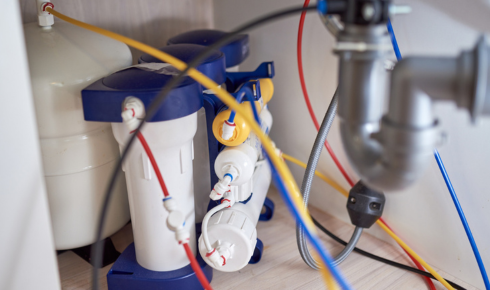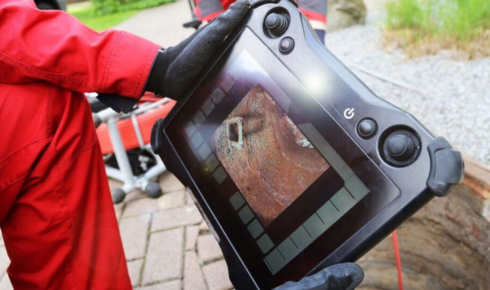Water is one of those things we take for granted. We turn on a tap, and it’s there—clear, cold, and seemingly perfect. But anyone who’s ever paused to taste tap water knows that “perfect” can be deceptive. Depending on where you live, water can carry an array of minerals, chemicals, and contaminants that might not be obvious at first sip. That’s where filtration technology, particularly reverse osmosis systems, steps in.
If you’re new to this world, the concept sounds fancy, almost sci-fi. Reverse osmosis (RO) isn’t some gimmick; it’s a tried-and-true method that has been used for decades to purify water by pushing it through a semipermeable membrane. The result? Water stripped of impurities, leaving only the clean, fresh taste you’d expect from a premium bottled brand—but flowing right from your tap.
The Appeal of Reverse Osmosis
What makes RO systems so appealing isn’t just the purity—they’re incredibly versatile. In many homes, water may carry traces of chlorine, lead, nitrates, or other chemicals, even after municipal treatment. RO tackles all of these, producing water that’s not only better tasting but safer. Families with young children, seniors, or anyone with sensitive health conditions find particular value here.
And beyond drinking, there’s a noticeable difference in cooking, coffee, and even ice cubes. Imagine brewing a cup of coffee without that faint chemical undertone or noticing that your pasta sauce tastes brighter because the water isn’t dulling it. That small change can make everyday routines feel a little more luxurious.
Understanding the Mechanics
If you like the “how it works” part, reverse osmosis is fascinating. Water is forced through multiple stages—typically sediment filters, carbon filters, and the actual RO membrane. Each stage removes something different. Sediment filters trap dirt and rust, carbon filters handle chlorine and chemical odors, and the membrane handles microscopic impurities that most other systems can’t catch. Some systems even add a remineralization stage to restore beneficial minerals, which can be nice if you miss that “natural” taste.
The complexity might sound intimidating, but modern systems are surprisingly user-friendly. Many come with indicator lights, quick-change cartridges, and space-saving designs that fit neatly under a sink or in a utility area.
Why Florida Residents Often Need RO
Here’s a reality check for anyone living in Florida: water quality varies dramatically across the state. Some areas have notoriously hard water, high in calcium and magnesium, while others have water treated heavily with chlorine or chloramines. Homeowners in coastal regions might also deal with trace salt content or occasional sediment.
That’s why ro systems Florida have become increasingly popular. They’re not just a luxury—they’re a solution to a tangible problem. Instead of buying bottled water or constantly worrying about taste, residents can enjoy consistent, high-quality water directly from their taps. And yes, this includes filling your kids’ water bottles, cooking pasta, or even washing fruits and vegetables without worrying about residual chemicals.
Choosing the Right System
When it comes to choosing, there’s no one-size-fits-all solution. Systems vary in stages, flow rate, tank size, and filtration capacity. Some are compact and perfect for apartments, while others are designed for high-demand households with multiple bathrooms.
A few tips to consider:
- Know your water: Testing is key. Even two towns a few miles apart can have drastically different water profiles.
- Consider maintenance: Filter changes and membrane replacements are regular parts of RO ownership. Budget time and money accordingly.
- Check certifications: NSF or WQA certifications indicate that the system actually performs as advertised.
For many households, a four- or five-stage system hits the sweet spot, balancing purity, taste, and affordability.
The Home Advantage
Installing home reverse osmosis systems has subtle but noticeable impacts beyond drinking water. Appliances like coffee makers, kettles, and irons tend to last longer because mineral buildup is reduced. Showerheads and faucets stay cleaner, which is a small but satisfying convenience.
Some homeowners notice skin and hair improvements too. Hard water can leave a dry, chalky feel, but RO water is soft, clean, and gentle—no heavy creams or conditioners required. Little lifestyle upgrades like this tend to go unnoticed until you’ve experienced the difference firsthand.
Cost vs. Value
Yes, RO systems aren’t cheap upfront. You’re looking at a few hundred dollars for a quality under-sink unit, and more for whole-home setups. But consider the savings in bottled water purchases, reduced appliance maintenance, and the sheer convenience of always having great-tasting water. The return on investment is often quicker than people expect.
Plus, with many modern systems designed for DIY installation, you can save on plumbing costs. And if you do opt for professional help, installation is usually straightforward and worth the peace of mind.
A Few Misconceptions
There are myths about reverse osmosis systems floating around. Some people think RO strips all minerals, making water unhealthy. While it’s true that RO removes certain minerals, for most people, this isn’t a health risk. Some units even add minerals back in. Another misconception is that RO water is slow or inconvenient. With the right tank size and flow rate, the water is readily available—no more waiting for filtered water to drip slowly into a container.
Making the Decision
If you’re on the fence about installing an RO system, start by identifying what matters most. Is it taste, health, appliance longevity, or just the convenience of not worrying about water quality? Understanding your priorities will guide you toward the system that fits your lifestyle.
Many families start small, with an under-sink unit for drinking and cooking, and expand later to larger setups if needed. This flexible approach allows you to experience the benefits without overcommitting.
Final Thoughts
Water is something we interact with constantly, yet rarely think about. A well-chosen reverse osmosis system transforms that interaction from mundane to satisfying. From the first sip to every cup of coffee, your experience improves in subtle but meaningful ways.



